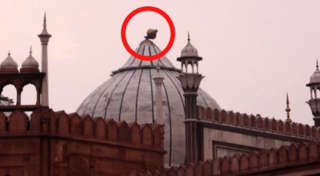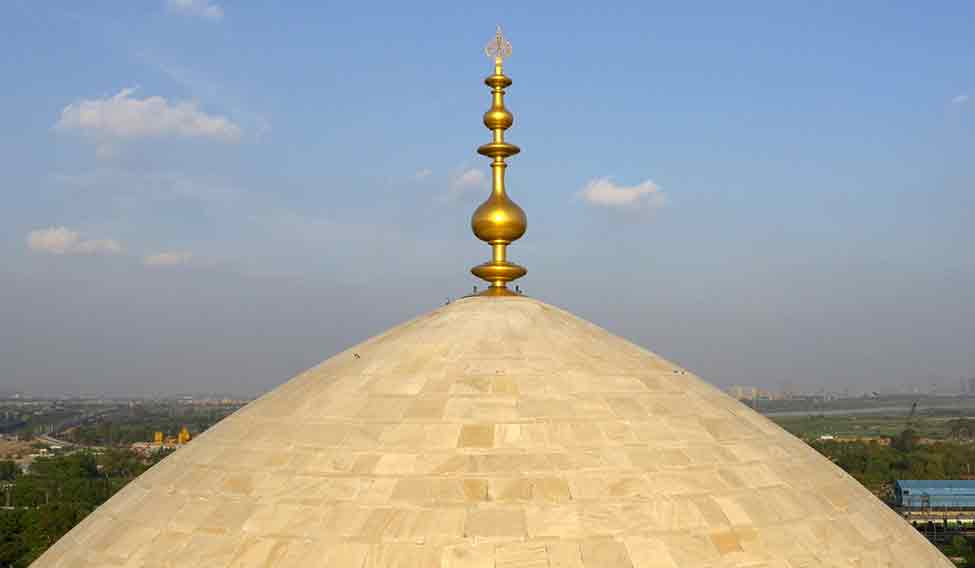The Delhi Wakf Board, which manages the mosque, wrote to the Archaeological Survey of India (ASI) to request the removal of the dangling part of the crown and repair of the ornamental structure that has topped the grand mosque since its construction after a thunderstorm recently damaged the finial of the 17th century Jama Masjid dome in Delhi.

The finial, which stands around 12-15 feet tall, is from the same era as the mosque, according to the Wakf Board. Conservationists are now devising a strategy to remove the dangling portion of the finial so that it does not cause any damage to tourists.
Finials are ornamental elements used to emphasise the top of a dome, tower, or spire, and are most typically encountered in monumental architecture.
A storm in May 2014 toppled the 18-foot finial atop the dome of the Humayun’s Tomb in the Capital, which was fashioned of Sal wood and enclosed in nine copper utensils with a brass finish. The Aga Khan Trust for Culture (AKTC) spent more than a year restoring the finial on the 16th century mausoleum’s dome.
Because the original was too damaged to be repaired, the AKTC, in collaboration with the ASI, had to replace it with an identical replica to restore the monument’s crowning splendour, according to a statement from the Trust.
On the finial, there were several inscriptions detailing previous repairs as well as artwork portraying a bearded man praying.
The Mughals employed 99.42 percent pure copper sheets — in eight-inch strips – integrated into one another, according to scientific study.
According to Nanda, copper of such purity is still not commercially accessible 450 years after it was used at Humayun’s Tomb.
Finally, repetitive lab study of the metal shards confirmed the usage of pure gold to complete the finial, underscoring the significance of the finial as well as the Mughals’ continuation of Indian artisan traditions.
The copper-gold finial on the top of Humayun’s Tomb appears to have been inspired by temple design, much as the chattris or canopies on the roof are. According to Nanda, a similar copper finial was later used on the Taj Mahal.
Experts estimate that the section of the Jama Masjid’s finial that is still hanging from the main dome weighs roughly 350 kg, making the full ensemble weigh around 500 kg.
Mughal tomb finials may be found all across India, and they demonstrate the pluralistic architectural traditions that they used by incorporating components from monuments that predate their arrival in India.
In Malaysian religious and domestic architecture, decorative roof finials are very prevalent. Makhota Atap Masjid is a collection of 38 mosques in Malacca that have traditional roof finials with layered and crown-shaped decorations.
These finials have been replaced with bulbous domes on mosques erected after the twentieth century.
Chigi are finials that were utilised atop Shinto temples in Ise and Izumo, as well as the imperial palace, in Japanese architecture.
A rooftop finial is called as mustaka or kemuncak in Java and Bali. Finials can be seen on both home and religious structures in Thailand.
Hti is a finial seen on Buddhist temples and pagodas in Burma.

